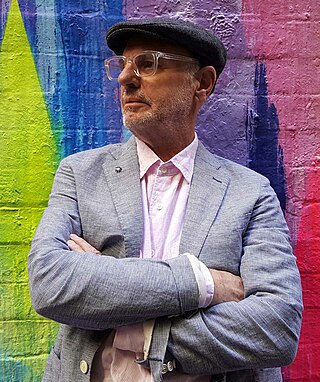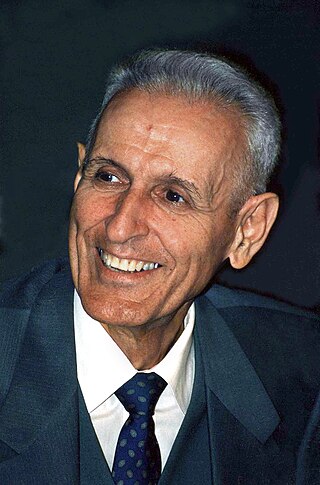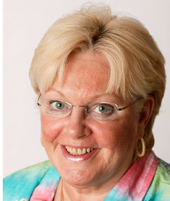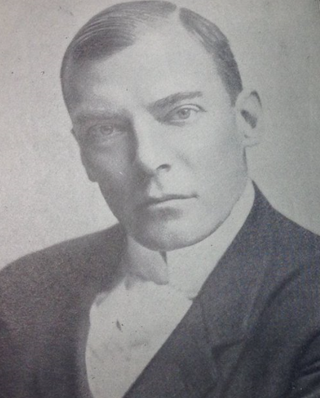Early life and career
She was born in Massachusetts and raised in the Lancaster, Pennsylvania area.
After the death of her first husband, she moved with her two children to Juneau, Alaska, to start an interior design business. A year or so later she began studying psychology at the University of North Carolina.
After achieving a master's degree in social work at Adelphi University circa 1952, she began working with the Manhattan Family Court and then became the director of the mental health clinic at the University Settlement House on the Lower East Side. In 1959 she married Dr. Mel Roman, an author, psychotherapist and artist.
Jo Roman's art, including paintings and “tactile boxes”, were displayed in group and individual exhibitions and reviewed in art publications throughout the late 1960s and early 1970s.
Advocacy and death
In 1965, Roman developed an intense interest in the philosophy, ethics and practice of "rational suicide" and concluded that the act was a "natural human right", morally comparable to having a baby or getting married. She began planning her own suicide, which she initially calculated to take place around the year 1992, when she would have been 75 years old.
In April 1978, however, she received a diagnosis of terminal breast cancer, with the most optimistic prognosis being that she had three to five years of life remaining. She began to undergo chemotherapy but, experiencing adverse reactions, decided instead to bring her plans for "self-termination" forward rather than suffer the pain and indignity of a prolonged terminal illness for the next several years.
Her preparations included completing a 250-page manuscript for a book titled Exit House: Choosing Suicide as an Alternative, which proposed state-sponsored institutions where people could end their own lives painlessly and with dignity. She also sent her own obituary to the New York Times, forwarded 100 copies of a personal letter to her family and friends and organized a ceremonial symposium/farewell party held in her art studio on Saturday, June 9, 1979, during which guests helped her create a final artwork representing her life and death. The symposium was recorded by a video documentary crew led by documentarian Richard Ellison.
Jo Roman committed suicide via an overdose of sleeping pills during the early morning following the symposium, on Sunday, June 10, 1979. She was 62 years old.

Sylvia Plath was an American poet, novelist, and short story writer. She is credited with advancing the genre of confessional poetry and is best known for two of her published collections, The Colossus and Other Poems (1960) and Ariel (1965), and also The Bell Jar, a semi-autobiographical novel published shortly before her suicide in 1963. The Collected Poems was published in 1981, which included previously unpublished works. For this collection Plath was awarded a Pulitzer Prize in Poetry in 1982, making her the fourth to receive this honour posthumously.

Philip Haig Nitschke is an Australian humanist, author, former physician, and founder and director of the pro-euthanasia group Exit International. He campaigned successfully to have a legal euthanasia law passed in Australia's Northern Territory and assisted four people in ending their lives before the law was overturned by the Government of Australia. Nitschke was the first doctor in the world to administer a legal, voluntary, lethal injection, after which the patient activated the syringe using a computer. Nitschke states that he and his group are regularly subject to harassment by authorities. In 2015, Nitschke burned his medical practising certificate in response to what he saw as onerous conditions that violated his right to free speech, imposed on him by the Medical Board of Australia. Nitschke has been referred to in the media as "Dr Death" or "the Elon Musk of assisted suicide".

Gloria Laura Vanderbilt was an American artist, author, actress, fashion designer, heiress, and socialite.

Murad Jacob "Jack" Kevorkian was an Armenian-American pathologist and euthanasia proponent. He publicly championed a terminal patient's right to die by physician-assisted suicide, embodied in his quote, "Dying is not a crime". Kevorkian said that he assisted at least 130 patients to that end. He was convicted of murder in 1999 and was often portrayed in the media with the name of "Dr. Death".

Margo Symington MacDonald was a Scottish politician, teacher and broadcaster. She was the Scottish National Party (SNP) Member of Parliament (MP) for Glasgow Govan from 1973 to 1974 and was Depute Leader of the Scottish National Party from 1974 to 1979. She later served as an SNP and then Independent Member of the Scottish Parliament (MSP) for Lothian from 1999 until her death.

Judy Chicago is an American feminist artist, art educator, and writer known for her large collaborative art installation pieces about birth and creation images, which examine the role of women in history and culture. During the 1970s, Chicago founded the first feminist art program in the United States at California State University, Fresno which acted as a catalyst for feminist art and art education during the 1970s. Her inclusion in hundreds of publications in various areas of the world showcases her influence in the worldwide art community. Additionally, many of her books have been published in other countries, making her work more accessible to international readers. Chicago's work incorporates a variety of artistic skills, such as needlework, counterbalanced with skills such as welding and pyrotechnics. Chicago's most well known work is The Dinner Party, which is permanently installed in the Elizabeth A. Sackler Center for Feminist Art at the Brooklyn Museum. The Dinner Party celebrates the accomplishments of women throughout history and is widely regarded as the first epic feminist artwork. Other notable art projects by Chicago include International Honor Quilt, Birth Project, Powerplay, and The Holocaust Project. She is represented by Jessica Silverman gallery.
Anita Pallenberg was a German-Italian actress, artist, and model. A style icon and "It Girl" of the 1960s and 1970s, Pallenberg was credited as the muse of the Rolling Stones: she was the romantic partner of the Rolling Stones founder, multi-instrumentalist Brian Jones, and later, from 1967 to 1980, the partner of Stones guitarist Keith Richards, with whom she had three children.
The right to die is a concept based on the opinion that human beings are entitled to end their life or undergo voluntary euthanasia. Possession of this right is often understood that a person with a terminal illness, incurable pain, or without the will to continue living, should be allowed to end their own life, use assisted suicide, or to decline life-prolonging treatment. The question of who, if anyone, may be empowered to make this decision is often the subject of debate.
Voluntary euthanasia is the ending of a person's life at their request in order to relieve them of suffering. Voluntary euthanasia and physician-assisted suicide (PAS) have been the focus of intense debate in recent years.
Final Exit Network, Inc. (FEN) is an American 501(c)(3) nonprofit right to die advocacy group incorporated under Florida law. It holds that mentally competent adults who suffer from a terminal illness, intractable pain, or irreversible physical conditions have a right to voluntarily end their lives. In cases deemed valid, Final Exit Network arranges what it refers to as "self deliverances". Typically, the network assigns two "exit guides" to a client and are present when they die, but the network states, and has proven in court, that it does not provide physical assistance in anyone's death; rather, their role is that of compassionate advisors and witnesses.

Johanna Gezina van Gogh-Bonger was a multilingual Dutch editor and translator of the letters of the van Gogh brothers. As the wife of art dealer Theo van Gogh, she was the sister-in-law of the painter Vincent van Gogh.

Dignity in Dying is a United Kingdom nationwide campaigning organisation. It is funded by voluntary contributions from members of the public, and as of December 2010, it claimed to have 25,000 actively subscribing supporters. The organisation declares it is independent of any political, religious or other affiliations, and has the stated primary aim of campaigning for individuals to have greater choice and more control over end-of-life decisions, so as to alleviate any suffering they may be undergoing as they near the end of their life.

Dignitas is a Swiss nonprofit organization providing physician-assisted suicide to members with terminal illness or severe physical or mental illness, supported by independent Swiss doctors. By the end of 2020, they had assisted 3,248 people with suicide at home within Switzerland and at Dignitas' house/flat near Zürich. They provide advisory work on palliative care, health care advance directives, and suicide attempt prevention, and legislation for right-to-die laws around the world.

Assisted suicide is suicide with the aid of another person. In the United States, the term "assisted suicide" is typically used to describe what proponents refer to as medical aid in dying, in which terminally ill adults are prescribed and self-administer barbiturates if they feel that they are suffering significantly. The term is often used interchangeably with physician-assisted suicide (PAS), "physician-assisted dying", "physician-assisted death", "assisted death" and "medical aid in dying" (MAiD).

Adrian Margaret Smith Piper is an American conceptual artist and Kantian philosopher. Her work addresses how and why those involved in more than one discipline may experience professional ostracism, otherness, racial passing, and racism by using various traditional and non-traditional media to provoke self-analysis. She uses reflection on her own career as an example.

Brittany Lauren Maynard was an American activist with terminal cancer who decided that she would end her own life "when the time seemed right." She was an advocate for the legalization of assisted suicide for the terminally ill.

Seales v Attorney-General[2015] NZHC 1239 was a 2015 court case concerned with whether a doctor could assist a terminally ill patient in ending her own life. Wellington lawyer Lecretia Seales, terminally ill from a brain tumour, sought High Court declarations to the effect that her doctor would not be committing murder, manslaughter or assisting a suicide if he assisted in her euthanasia. Seales also sought, as an alternative, that the court make declarations that the Crimes Act was not consistent with the New Zealand Bill of Rights Act 1990. The Court declined to make any of the declarations sought by Seales. Seales died of her illness the day after the judgment was delivered.

Lucretia is a 1666 history painting by the Dutch Golden Age painter Rembrandt Harmensz van Rijn in the collection of the Minneapolis Institute of Art. It is an oil painting on canvas that depicts a myth about a woman named Lucretia who lived during the ancient Roman eras. She committed suicide to defend her honor after being raped by an Etruscan king's son. For her self-sacrifice she is known as a heroine to the Romans, who celebrated the feminine ideals of virtue and chastity.
California End of Life Option Act is a law enacted in June 2016 by the California State Legislature which allows terminally ill adult residents in the state of California to access medical aid in dying by self-administering lethal drugs, provided specific circumstances are met. The law was signed in by California governor Jerry Brown in October 2015, making California the fifth state to allow physicians to prescribe drugs to end the life of a terminally ill patient, often referred to as physician-assisted suicide.

William Richard Cunningham Latson was an American physician, occultist, physical culturist and vegetarian.














